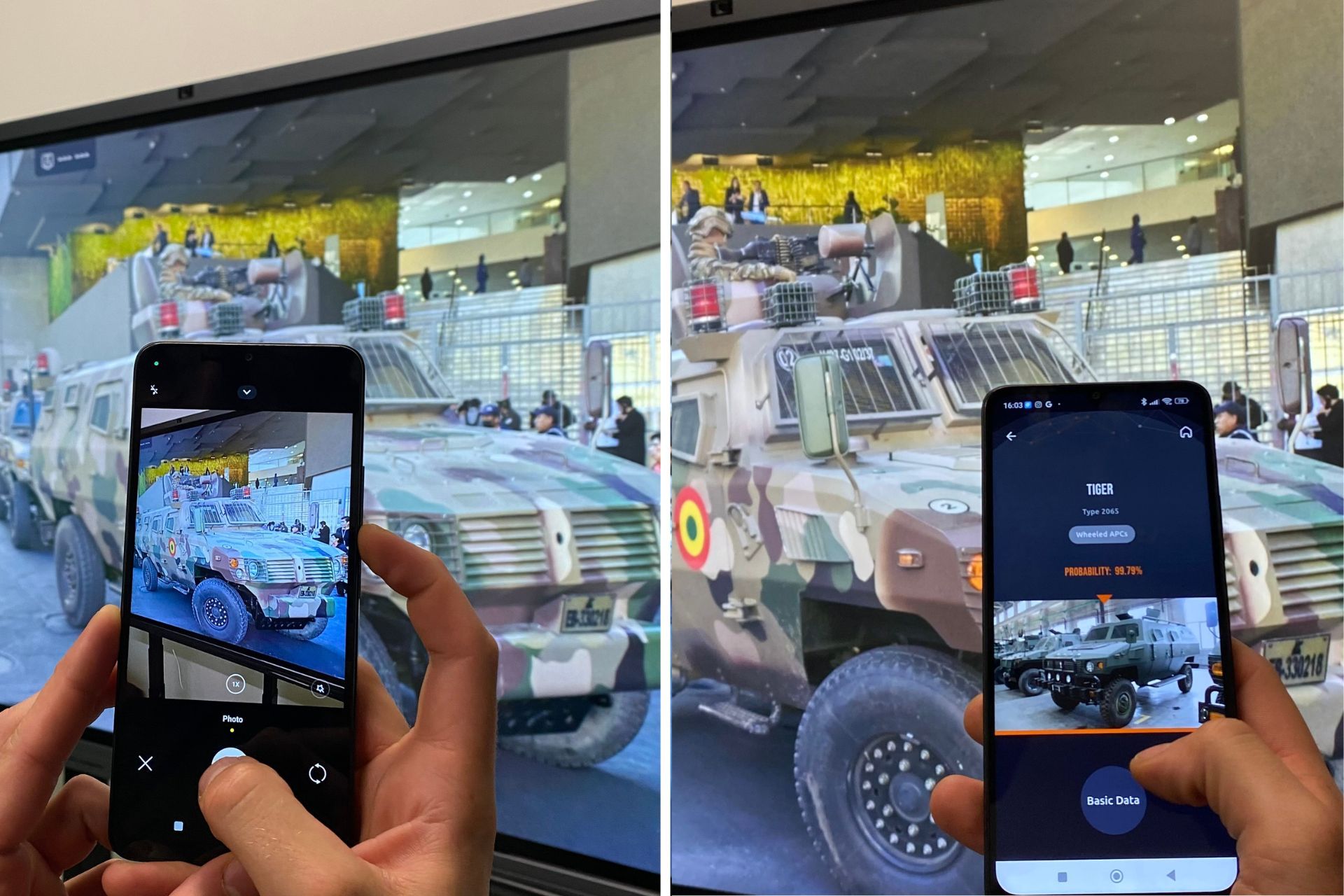Breaking News
Bolivia Crisis: How MEGA-Army App Identifies Vehicles Used During the Failed Coup Attempt.
On Wednesday, June 26, 2024, Bolivia experienced a failed coup attempt. Amidst the unsettling presence of armed soldiers and armored vehicles at the presidential palace in La Paz, President Luis Arce called for mobilization. A significant aspect of this coup attempt was the use of the Chinese-made armored vehicle, the ZFB-05, by the insurgents. While specialists can recognize such vehicles, the MEGA-Army app provides a definitive identification and detailed capabilities of the vehicle. This tool is indispensable not only for defense professionals but also for journalists covering the events in Bolivia, offering a wealth of additional information to enhance their analysis.
Follow Army Recognition on Google News at this link

Detection of the Chinese Tiger ZFB-05 by the Mega-Army application, taking a photo is enough to identify it and have all the technical details of the vehicle (Picture source: IDDEA)
Tensions escalated in the Bolivian capital, where armored vehicles and troops were not only seen in front of the presidency but also around the government headquarters. President Arce, in a video message, urged the Bolivian people to mobilize in defense of democracy, condemning the actions of certain army units as irregular and unacceptable.
The situation reached a critical point in the afternoon when army units positioned armored vehicles in front of the presidential palace. General Juan José Zúñiga, the army chief, was briefly seen entering the palace before being arrested by police forces while addressing the press.
The ZFB-05, used during the coup, is primarily utilized for crowd control and internal security operations. Equipped with a powerful diesel engine, it offers high mobility in urban and rough terrains. It has moderate armor, capable of withstanding intermediate caliber fire, but like the Baoji, it is vulnerable to heavier charges and explosive devices. This vehicle can also be outfitted with various armaments, including light machine guns and tear gas grenade launchers, making it particularly useful in public order contexts.
The Shaanxi Baoji ZFB-05 armored vehicle has become a key player in various regional conflicts and military operations due to its robust capabilities. First introduced at the Eurosatory exhibition in Paris in 2012, its mass production began in 2014. Designed to carry up to nine fully equipped infantrymen, including a unit commander and a driver, it is powered by a Cummins ISDE200-30 diesel engine with 200 horsepower, reaching top speeds of 115 km/h and able to climb slopes at a 60-degree incline when fully loaded. The vehicle weighs 4,500 kilos empty and can carry an additional 1,100 kilos.
Its hull is resistant to assault rifle fire and shrapnel but is not designed for heavy armor, making it susceptible to missile attacks and explosive charges from drones. The Baoji’s chassis is also vulnerable to mines and improvised explosive devices, indicating that while effective for troop transport, it is not ideal for high-intensity combat. Its turret can accommodate a 7.62mm machine gun, a heavier 12.7mm machine gun, or a 30mm grenade launcher.
The MEGA-Army app (Military Equipment Guide App for Land Forces Equipment) utilizes advanced artificial intelligence (AI) to identify terrestrial military equipment. In events such as coups or military operations where the presence of diverse military equipment is common, MEGA-Army becomes an essential tool. It allows users, whether they are military personnel, journalists, or security researchers, to capture an image of a vehicle or piece of military equipment through their smartphones. The app then analyzes this image via its AI system to identify the type of vehicle, its technical characteristics, its origin, and potentially its use in the field.
This rapid and reliable identification capability can provide crucial information in situations where understanding quickly what type of equipment is being used can influence tactical and strategic decisions. Moreover, in contexts of surveillance or reporting, accurately identifying equipment in the field can enhance the quality of information conveyed and aid in understanding the dynamics at play.


























